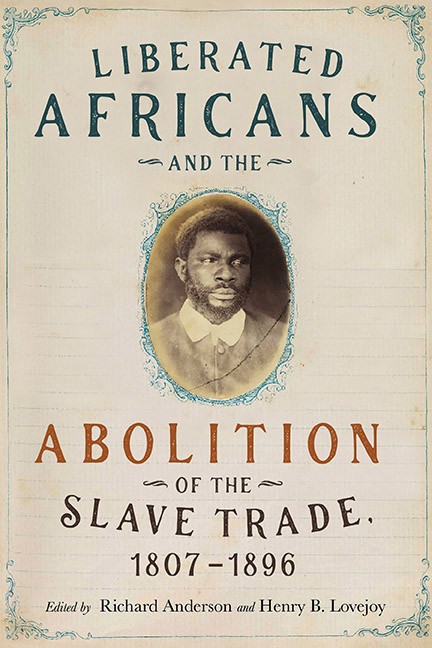Book contents
- Frontmatter
- Dedication
- Contents
- List of Illustrations
- Acknowledgments
- Introduction: “Liberated Africans” and Early International Courts of Humanitarian Effort
- Part One Origins of Liberated Africans
- Part Two Sierra Leone
- Part Three Caribbean
- Part Four Lusophone Atlantic
- Part Five Liberated Africans in Global Perspective
- Part Six Resettlements
- Bibliography
- Notes on Contributors
- Index
13 - Liberated Africans in the Indian Ocean World
Published online by Cambridge University Press: 21 March 2020
- Frontmatter
- Dedication
- Contents
- List of Illustrations
- Acknowledgments
- Introduction: “Liberated Africans” and Early International Courts of Humanitarian Effort
- Part One Origins of Liberated Africans
- Part Two Sierra Leone
- Part Three Caribbean
- Part Four Lusophone Atlantic
- Part Five Liberated Africans in Global Perspective
- Part Six Resettlements
- Bibliography
- Notes on Contributors
- Index
Summary
When the HMS Osprey steamed into Aden harbor in September 1888 to deliver 204 Africans captured from slave ships in the Red Sea, responsibility fell to Assistant Political Resident E. V. Stace to oversee the captives’ “disposal” among the residents of the city. Commander Gissing considered the Osprey's mission a success, although he regretted that, because the three dhows had failed to stop after blanks were fired across their bows, he was obliged to fire live rounds, which killed four of the African captives, as well as the captain of one of the ships, and wounded another four African captives. Kiloo, a sixteen-year-old boy, received a bullet wound though his chest; Bahaza, a twelve-year-old boy, received a “bullet wound through muscles beneath spine of right scapula”; Tooroongah, a twelve-year-old girl, suffered from a “bullet wound of head (superficial)”; and Sayenha, a ten-year-old girl, received a “bullet wound of right arm (superficial).” Within five days of the Africans’ arrival, Stace had posted a notice in town in Arabic calligraphy that read:
ATTENTION! The recently captured slaves now in Aden will be distributed to those wishing to take them.
The notice went on to say that Europeans who were “married and approved” could take boys and girls who were both Christian and Muslim. Unmarried Europeans could take boys. Married “natives” could take Muslim boys or girls “as servants” (although Stace made sure to clarify here: “to be free, i.e., no longer slaves”) until able to take care of themselves. Unmarried and “approved natives” could take Muslim boys as servants and could take Muslim girls in marriage if of marriageable age and with the girl's consent. Applications were to be made to the assistant resident.
Within days, dozens of proposals flooded in from local elites, missionaries, and government officials who sent petitions to Stace expressing reasons they should be permitted to take liberated Africans. Applicants included the police inspector, the postal commissioner, and A. C. Gomes, who would later become one of Zanzibar's most famous photographers. Gomes eventually received a ten-year-old girl whom he pledged to “maintain, feed, and clothe” until she was twenty-one or married. Allen Patterson of the Free Church of Scotland Mission requested that Stace let him “have the first selection of the boys and girls, as it is very important that we secure the youngest—and healthiest” for his mission.
- Type
- Chapter
- Information
- Publisher: Boydell & BrewerPrint publication year: 2020

